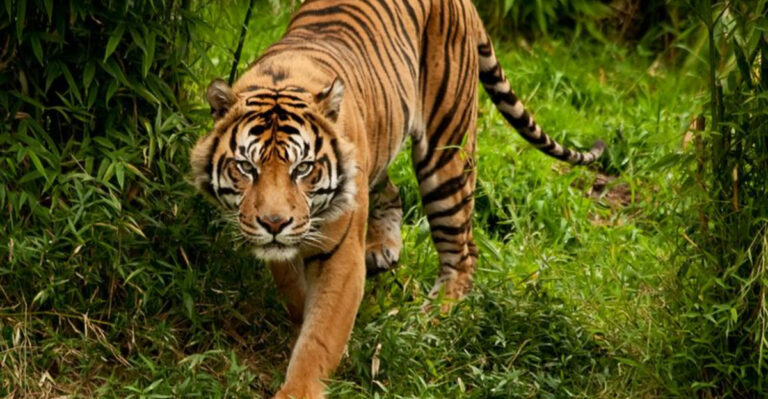15 Regions Across America You Can Find Scorpions
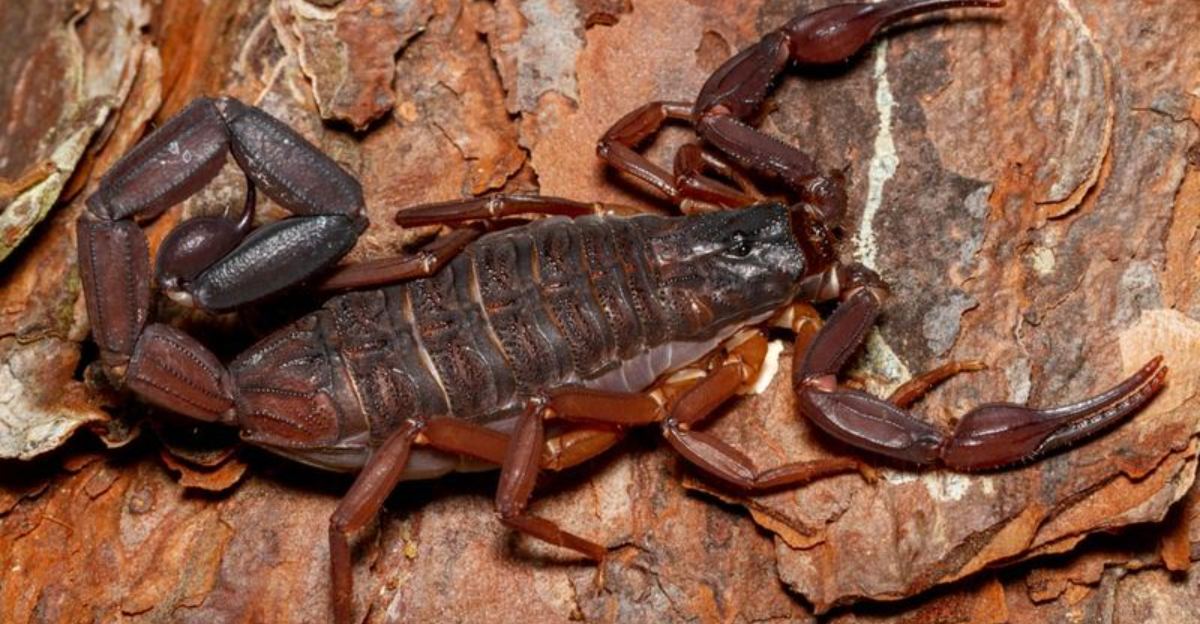
Scorpions aren’t just desert dwellers – they’ve adapted to thrive in surprising corners across America. These eight-legged arachnids with their distinctive curved tails can be found from sun-baked deserts to humid forests.
While most American species aren’t dangerous, knowing where scorpions call home helps both nature enthusiasts and those who’d rather keep their distance.
1. Sonoran Desert’s Glowing Residents
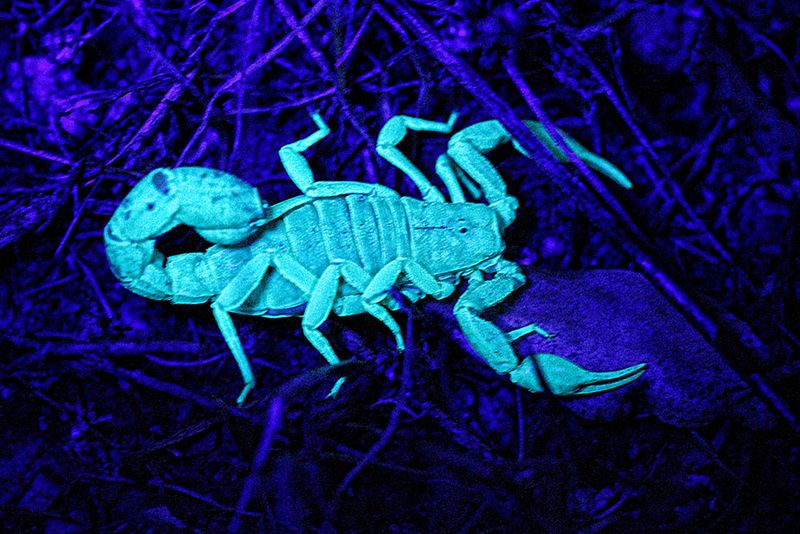
Under ultraviolet light, the Sonoran Desert’s bark scorpions glow an eerie blue-green against the night. These tiny but potent creatures hide in rock crevices and tree bark during scorching Arizona days.
Local residents often keep blacklights handy for nighttime scorpion checks around homes, especially during summer months when these arachnids become more active.
2. Texas Hill Country’s Hidden Hunters
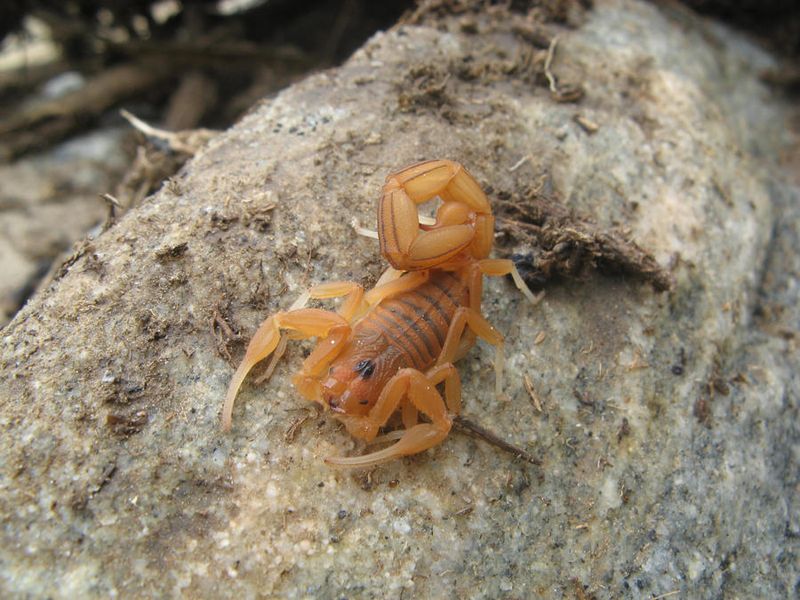
Between limestone rocks and under cedar trees, striped bark scorpions make themselves at home throughout Texas Hill Country. Their honey-colored bodies with distinctive dark stripes help them blend perfectly with the region’s rocky terrain.
Summer rains often drive them seeking shelter in garages and homes, creating unexpected encounters with central Texas residents.
3. New Mexico’s High Desert Survivors
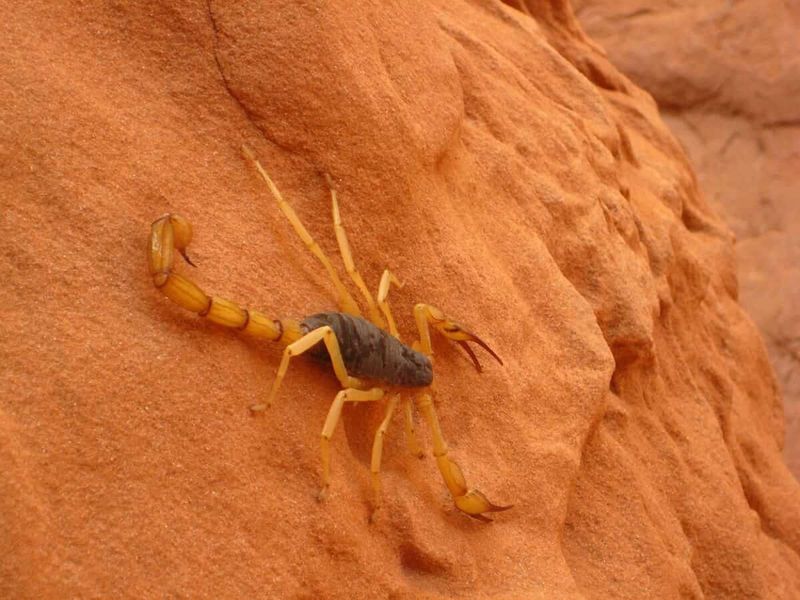
Tough as the land itself, scorpions in New Mexico’s high deserts have mastered extreme temperature swings. They can freeze solid overnight and thaw unharmed the next day – a superpower that lets them thrive where other creatures can’t.
Look for them around Albuquerque and Santa Fe, especially in undisturbed areas with natural rock formations.
4. Nevada’s Valley Of Fire Specialists
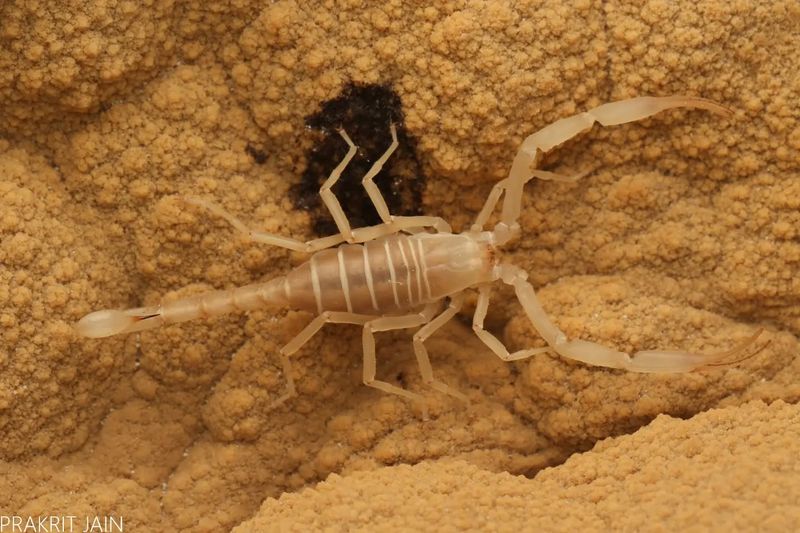
Against the crimson sandstone of Valley of Fire, dune scorpions have evolved specialized feet that work like snowshoes on loose sand. Their pale coloration reflects the intense heat that would otherwise cook these remarkable survivors.
Hikers exploring this otherworldly landscape might spot them during twilight hours when temperatures drop and hunting begins.
5. California’s Joshua Tree Nightcrawlers
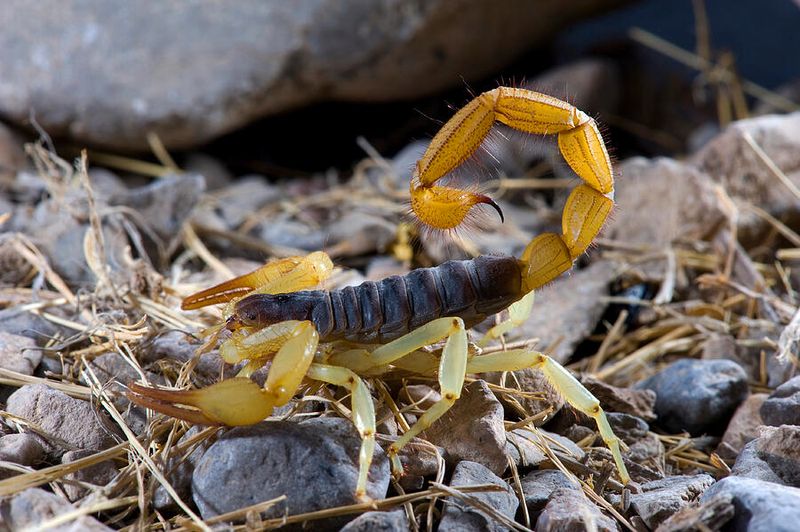
When the sun dips below Joshua Tree National Park’s iconic silhouettes, hairy scorpions emerge from their burrows. These impressive arachnids – sometimes reaching 6 inches long – patrol the moonlit desert floor hunting for beetles and small lizards.
Their thick, furry-looking legs give them their name and help sense vibrations from potential prey.
6. Oklahoma’s Cross Timbers Residents
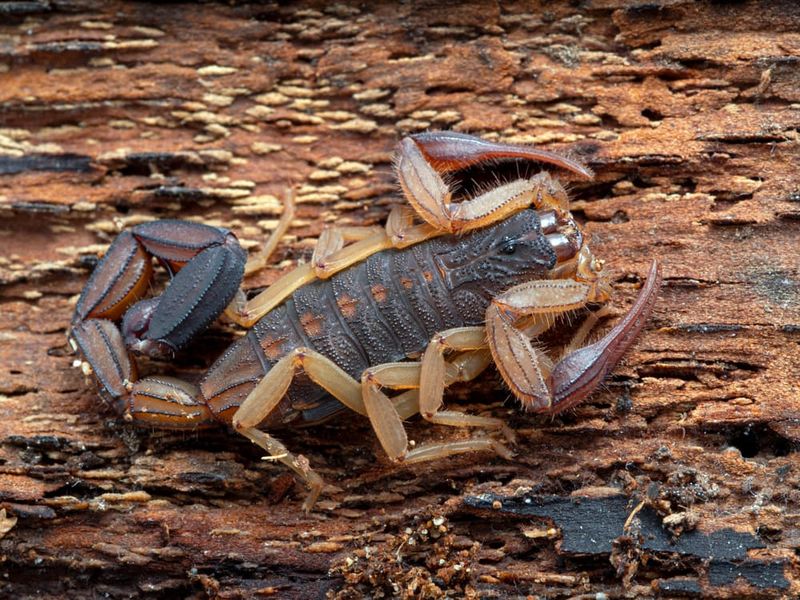
Amid Oklahoma’s Cross Timbers region, where prairies meet forests, striped devil scorpions create homes under fallen logs and stones. Spring floods often force these normally shy creatures to higher ground, sometimes into barns and outbuildings.
Their relatively mild venom makes them less concerning than their southwestern cousins, though their sting still packs a punch.
7. Utah’s Canyonlands Climbers
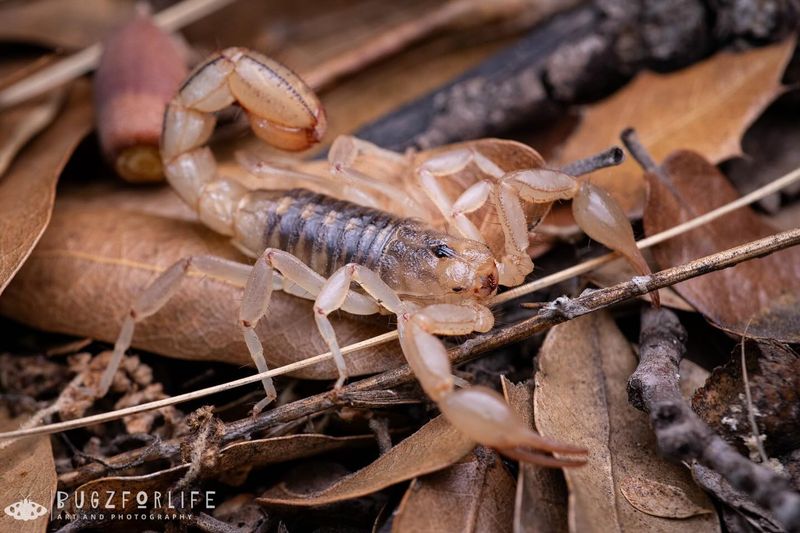
Clinging to vertical sandstone walls in Utah’s Canyonlands, northern scorpions have mastered the art of rock climbing. Their specialized claws grip tiny imperfections in the rock face, allowing them to hunt in places few predators can reach.
Backpackers exploring slot canyons occasionally spot these remarkable climbers frozen in place during daylight hours, waiting for nightfall.
8. Colorado’s Western Slope Survivors
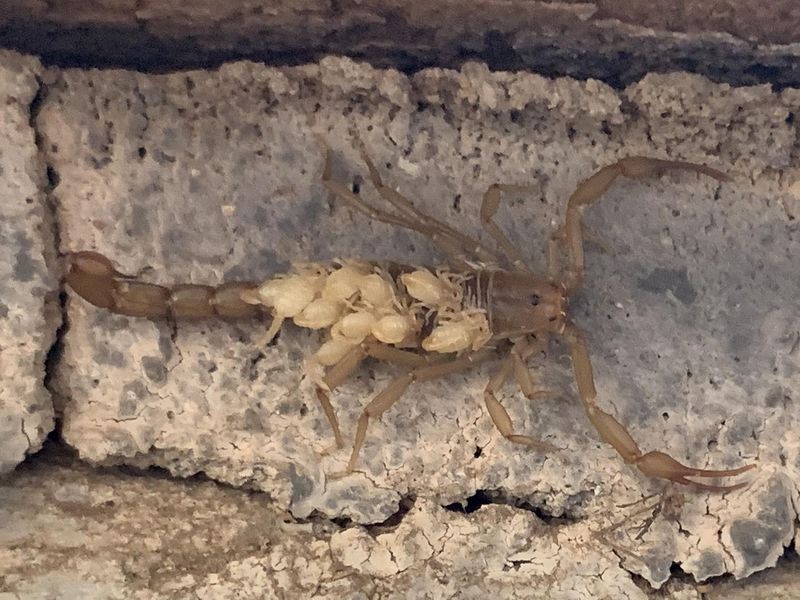
Defying Colorado’s harsh winters, hardy scorpions inhabit the western slope’s juniper woodlands and sage-covered hills. Their ability to lower their metabolic rate to near-zero lets them survive months of freezing temperatures tucked under rocks.
Grand Junction residents sometimes find these resilient creatures seeking warmth in basements and crawlspaces during late fall cold snaps.
9. Florida’s Tropical Peninsula Dwellers
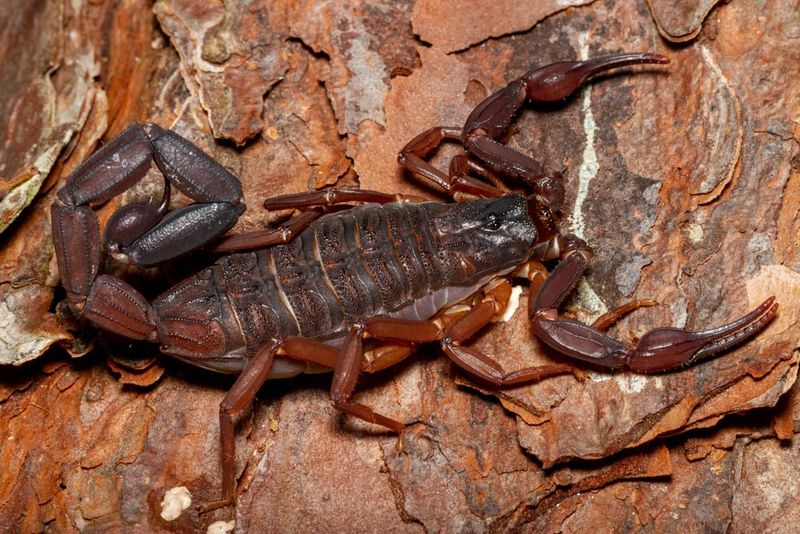
Surprise! Florida’s humid climate supports Guiana striped scorpions, especially in the southern peninsula. Unlike their desert cousins, these moisture-loving scorpions thrive in rotting palm fronds and beneath damp leaf litter.
Homeowners around Miami and the Keys occasionally find them in shower drains and damp utility rooms, attracted by the moisture and insect prey.
10. Kansas Tallgrass Prairie Hunters
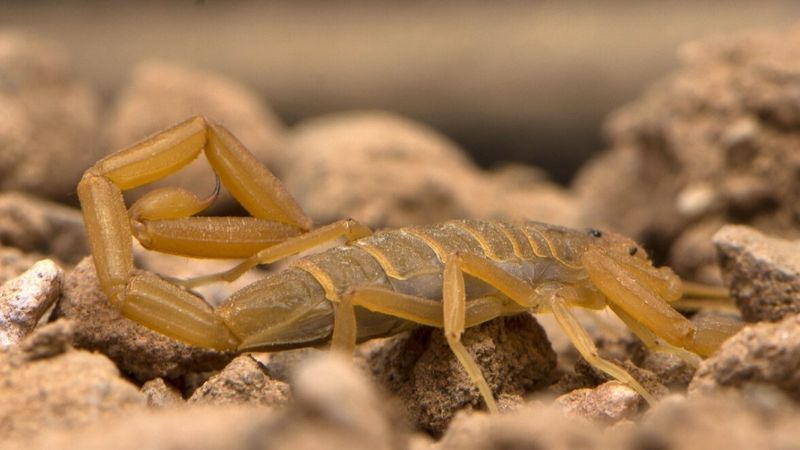
Beneath the swaying bluestem of Kansas tallgrass prairies, plain eastern scorpions dig intricate burrows that can reach two feet deep. These underground networks protect them from prairie fires and extreme weather while providing ambush points for hunting.
Their presence surprises many who associate scorpions only with deserts, yet they’ve been prairie residents since long before human settlement.
11. Georgia’s Coastal Plain Burrowers
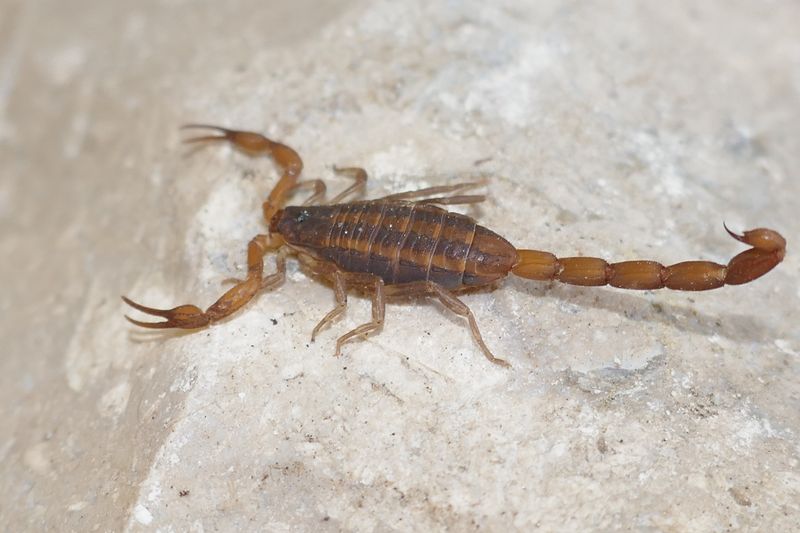
Sandy soils of Georgia’s coastal plain provide perfect digging grounds for Hentz striped scorpions. Their pale yellow bodies with twin dark stripes become more vibrant after each molt, serving as nature’s calendar of their age.
Pine forests around Savannah harbor surprising numbers of these nocturnal hunters, who emerge after summer thunderstorms to feast on insects drawn to the moisture.
12. Louisiana’s Bayou Bark Dwellers
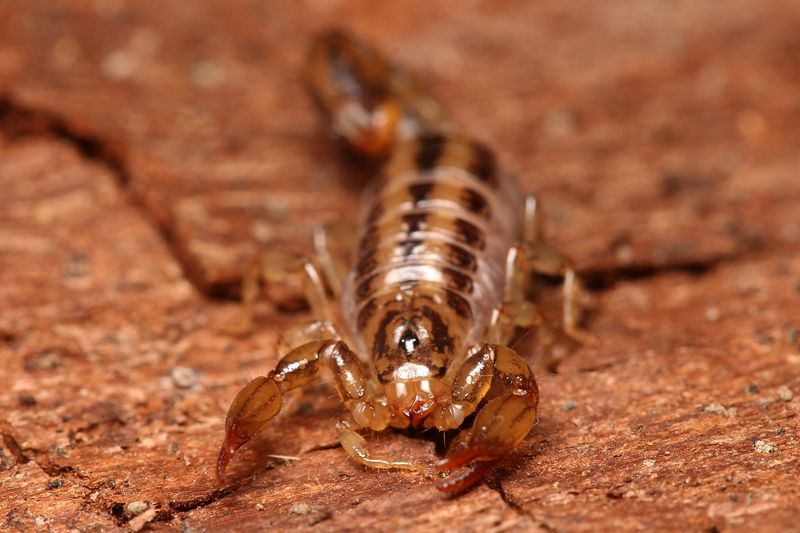
Tucked under loose bark of water oak trees, Louisiana’s unstriped scorpions navigate the humid bayou environment with surprising grace. Flash floods don’t faze these swimmers, who can survive underwater for nearly 48 hours by trapping air bubbles against their bodies.
Their preference for tree bark makes them common encounters during firewood gathering in rural parishes.
13. Missouri Ozarks’ Rocky Retreats
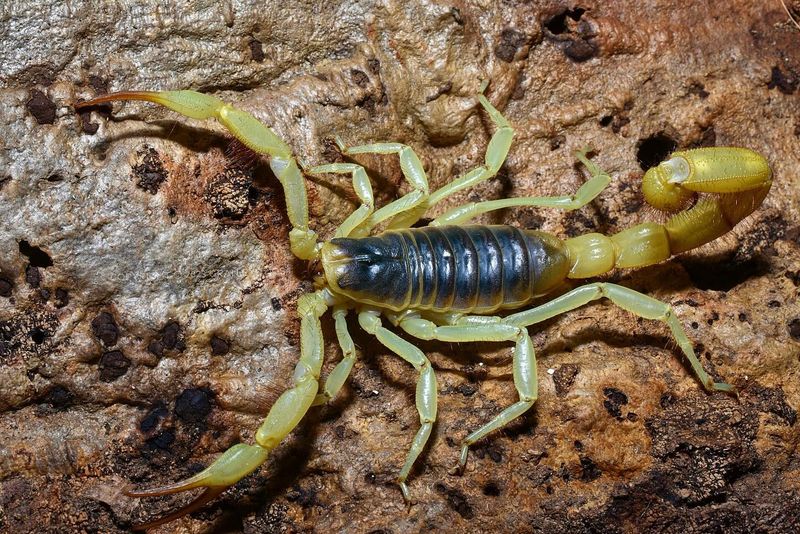
Among the ancient dolomite glades of Missouri’s Ozarks, striped scorpions find perfect hiding spots beneath sun-warmed rocks. These northern survivors create micro-territories around specific rock formations, rarely venturing more than a few yards from their chosen home.
Hikers exploring Ozark glades might spot them retreating under rocks disturbed during trail exploration.
14. Arkansas’s Ouachita Mountain Dwellers
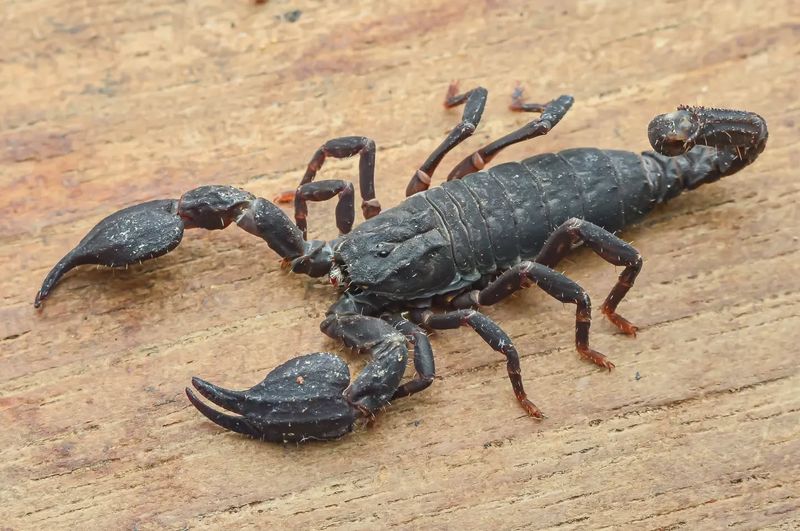
Between quartz crystals and shale outcroppings in Arkansas’s Ouachita Mountains, scorpions find ideal hunting grounds. Their ability to squeeze through impossibly narrow cracks gives them access to prey and protection other predators can’t reach.
Crystal hunters occasionally find them while digging for quartz points – unexpected companions in the search for geological treasures.
15. Alabama’s Cumberland Plateau Specialists
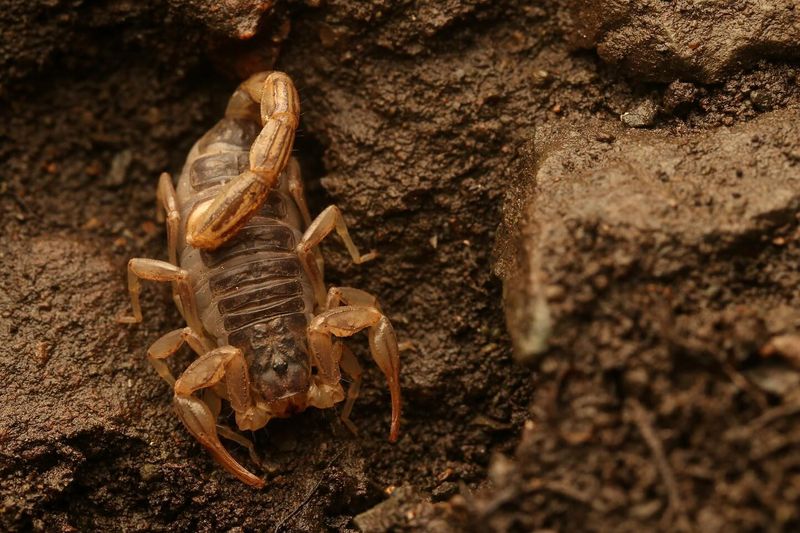
Tucked into Alabama’s portion of the Cumberland Plateau, plain eastern scorpions inhabit the unique sandstone ecosystems. These adaptable arachnids have learned to hunt in the region’s numerous caves, sometimes venturing surprisingly deep into the underground world.
Their eyes, evolved for low-light conditions, make them effective predators in the twilight zone of cave entrances.



